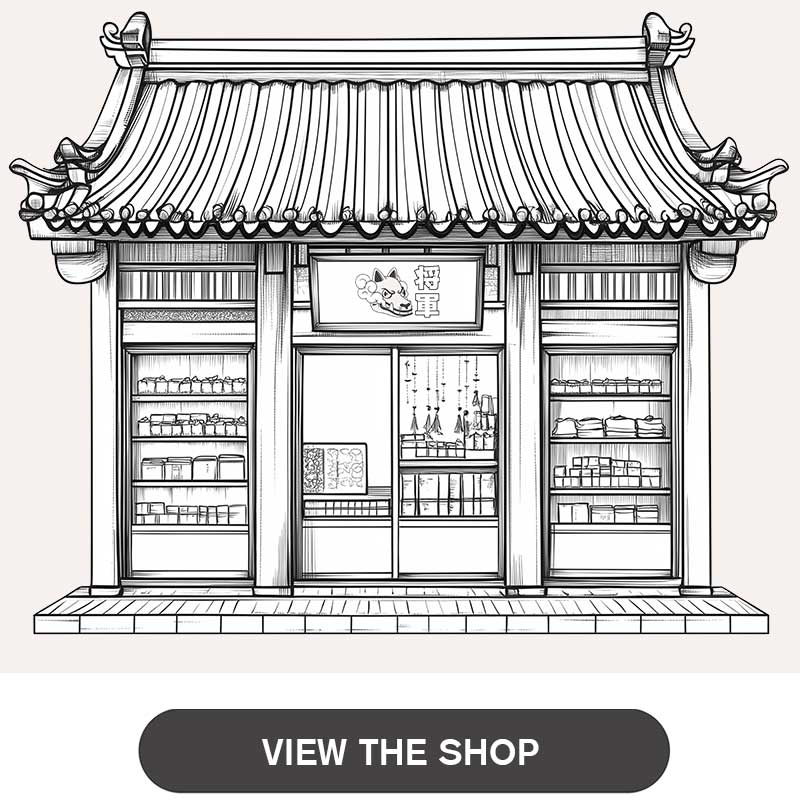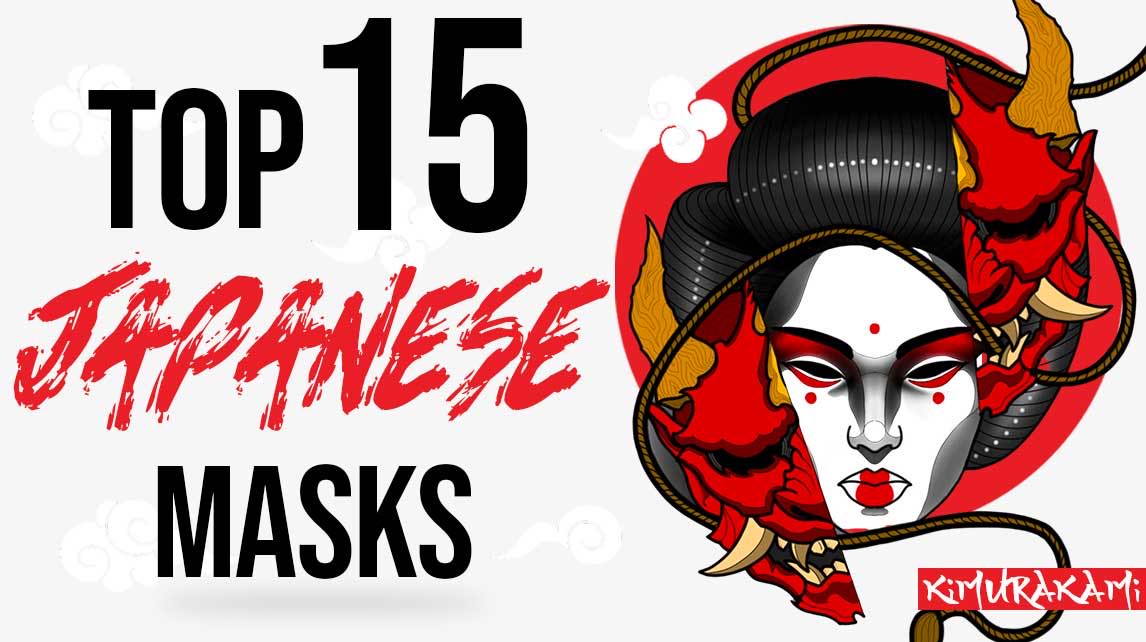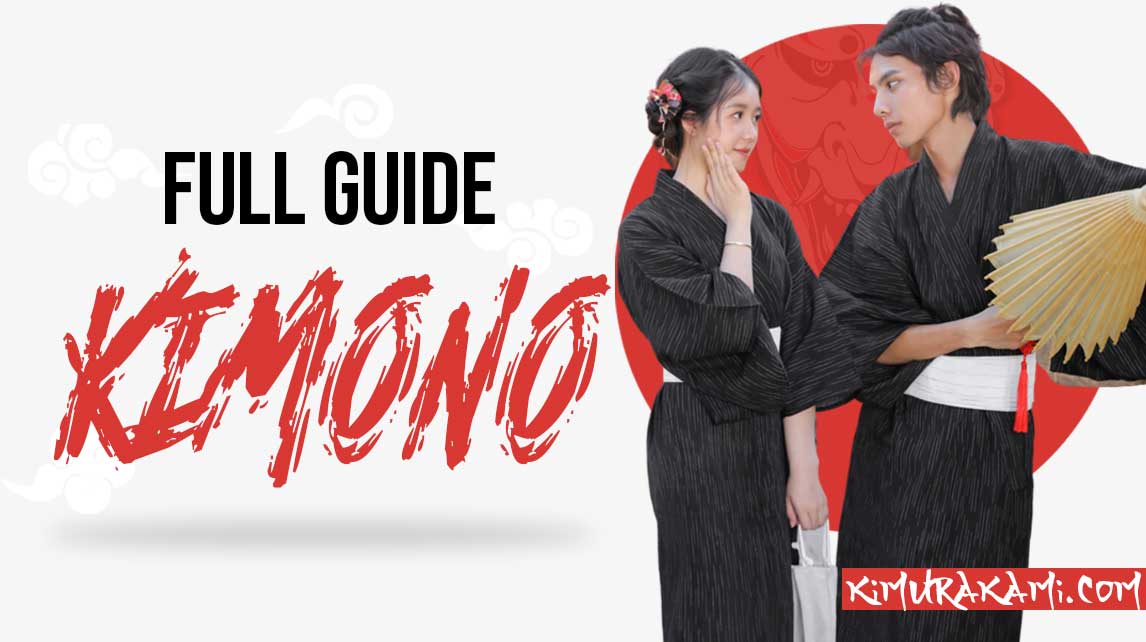You can't understand Japan's pre-modernization history without knowing about the samurai. These elite Japanese warriors, who defended the nation with their sharp katanas, lived by the ethical code of Bushido. The honor of these fighters reaches its highest expression in the Japanese ritual suicide: seppuku.
Called seppuku in Japan (切腹) or hara-kiri in the West, ritual suicide is an honorable practice of the samurai code characteristic of Japanese history. "Seppuku," which can be translated as "cutting one's stomach" has a sense of honor, military or punitive.
In this article we will answer different questions you might have, such as - what was the most famous seppuku in Japan? Or how this particular ritual was performed? And what is the Bushidō?
Here's the lowdown on the history surrounding this absolutely extraordinary ritual.
Difference between Hara-kiri and Seppuku
You've probably heard the word hara-kiri. Bien qu'il ait la même signification que seppuku, "se couper le ventre", ils ne sont pas identiques.
So what is the difference?
Harakiri was usually performed on the battlefield during feudal Japan, before being captured by the enemy army and in a solitary way. It was a more painful death, without any ritual.
Seppuku, on the other hand, had a carefully planned ceremony. This ritual was performed when a samurai had lost his lord or committed an act that tarnished his honor.
The Japanese prefer to use the term seppuku, the word hara-kiri being considered "vulgar".
Bushidō: the samurai code of honor

The Bushido code is widely known throughout the world. It is a set of rules that governed the behavior and life of samurai. The word "Bushi" means "warrior" and the ending "Do" means "the way". Or in other words, the way of the warrior.
What really makes it special is its content. For the first time in human history, a warrior was governed by guidelines that included moral concepts such as loyalty, honor and compassion, among others. Not everything was valid for winning the fight against your opponent. Attitudes such as attacking an enemy from behind were strictly forbidden!
In addition, if a samurai saluted his honor, the only way to restore it was to commit Seppuku, also known as Hara-kiri. A supreme act of bravery in which the warrior would pierce his belly with a dagger and slit his stomach open to bleed to death bit by bit in an absolutely excruciating and painful death.
The most impressive thing about the Bushidō code is that its practitioners have almost completely lost their fear of death and neutralized one of the strongest instincts that human beings carry with them from birth: survival.
According to the philosophers of the time, a man who has lost his fear of death, can decide freely and always do what he believes to be right without stopping to think about the bad consequences it may bring.
Bushido was governed by the 7 virtues of the warrior
<

義 Gi - Justice (fair decisions).
It was fundamental to be fair in decisions. Before any action, a samurai had to ask himself whether he was fair or not.
勇 Yu - Courage
Hiding one's head like an ostrich and not daring to raise one's voice when one feels that something needs to be done is not living one's life to the fullest. One must be able to stand out from a fearful mass and act to do what one believes is right, even if that act may pose a risk to oneself!
仁 Jin - Benevolence
Very long years of training give the samurai great power that must be used wisely. Showing compassion and benevolence to the weak and needy is also a way for the samurai to grow as a warrior.
礼 Rei - Respect, courtesy
Cruelty and the need to demonstrate one's power are not high on a samurai's list of priorities. Even his enemies deserve respect. Without this gesture, we would be little better than animals.
Makoto - Honesty, Absolute Sincerity
A samurai's word is sacred. Saying he will do something is almost the same as doing it. He doesn't have to make a formal profession to commit himself. It's enough to say it. Samurai rely heavily on their credibility and it has to be impeccable.
名誉「名譽」Meiyo - Honor
A samurai must keep his honor intact throughout his life. This was one of his top priorities. Committing a dishonorable act, can be grounds for suicide by seppuku. The only way to protect a samurai's honor is through integrity. It takes great self-control to keep one's actions in line with one's convictions. This was the hard way of the Japanese warrior.
忠義 Chuugi - Loyalty
The word Samurai has the etymology "Samurau" which means "to serve." A warrior had to be under the tutelage of a Daymio (warlord) for whom he was willing to give his life if necessary. Loyalty was essential for a samurai to have a long and profitable career.
Origins and evolution
The code of the Bushidō has evolved over time. Originally, it was primarily a set of rules established to properly endoctrinate soldiers and prepare them to die in battle if necessary. Loyalty was the backbone of the Bushidō for hundreds of years and it is believed that this code originated around the Kamakura period. However, with the advent of the two hundred years of peace that the Tokugawa clan managed to bring to Japan during the Edo period, samurai stopped fighting and began to lead a life in which they had more time for meditation, reflection, study, calligraphy, and other disciplines. The Bushidō included more and more of ethical and moral concepts such as honor, benevolence and honesty. They became loyal subjects with a high intellectual and cultural level, always waiting for the moment to go back into battle to defend their nation and lord.
Bushido today
These warrior virtues have left a deep imprint on Japanese society that endures to this day. Their traces are even visible in the daily lives of people living in this country. Anyone who has practiced Japanese martial arts knows for sure that these virtues are very present in their teachings. Practices such as calligraphy or the tea ceremony also carry the essence of Bushidō within them. Honor, loyalty and honesty are the 3 principles that are inscribed in the subconscious of Japanese children at birth. It is amazing how even today they strongly protect the teaching of values as a fundamental part of their lives. And we are not wrong to say that the Bushidō code has a lot to do with this.
Death and honor, the samurai's farewell
 Yamamoto Tsunetomo, author of the book - Hagakure, 1659 - 1719.
Yamamoto Tsunetomo, author of the book - Hagakure, 1659 - 1719.
One of the most famous phrases in the Hagakure is, "The way of the samurai is death." For the samurai, the concepts of honor and death were closely related. Moreover, they prepared themselves day after day not to fear death, but to respect it. This is essential to better understand the development of the seppuku ceremony and the reason for its celebration.
From our Western perspective and from a superficial viewpoint, this suicide of the samurai may seem like a way of despising life. Nothing could be further from the truth. The samurai cherished life, but they were not attached to it when they had to die.
For these Japanese warriors, the only ways to die with honor were either on the battlefield during war or by seppuku. Falling prey to the enemy or old age was a completely unthinkable way to say goodbye to life in the samurai mentality!
Development of the seppuku ceremony
 Image from the film - Harakiri Seppuku, by Masaki KOBAYASHI.
Image from the film - Harakiri Seppuku, by Masaki KOBAYASHI.
Seppuku was the exclusive privilege of the Japanese warrior caste. This ritual suicide could be voluntary, for example after the death of a feudal lord (daimio), or to make amends for a breach of the code of honor. It could also be imposed (mandatory) by the daimio himself, the shōgun, or a court when the samurai had committed theft, murder, or a serious breach of honor.
The samurai considered the opening of the abdomen by a horizontal cut as an honorable way to die. Thus, they were not executed as common criminals and their families did not inherit their dishonor or be deprived of their property.
What were the guidelines for this celebration?
The ceremony was usually held in the rooms of a temple or in one's own home. In the case of high-ranking samurai, it might be held in the open air. Regardless of the location chosen, the death was witnessed by a group of onlookers and/or witnesses, usually friends and family members. The samurai showed up fully groomed and wore a white ceremonial kimono.
The kaishakunin (介錯人, The attendant)

The nature of the cut involved a prolonged and agonizing death. To spare the dead man and his witnesses anguish, the kaishakunin was necessary. His mission was to decapitate the dying person at his signal. This assistant was usually chosen by the seppukunin (the person who was to perform seppuku), usually a trusted friend. He could also be appointed by the daimio himself.
Weapons used
It was customary to use the short sword of samurai equipment, called wakizashi, a 30-60 cm long sword. However, the most commonly used weapon was the tantō, a Japanese double-edged dagger 15 to 30 cm long. Only the blade of this dagger was used wrapped in rice paper to prevent the samurai from cutting his hands while brandishing it.
A Wakizashi, samurai's short sword, from the Edo air.
Tantō, the dagger most commonly used by samurai to perform seppuku.
The beginning of the ritual
Before cutting the abdomen, the samurai would sit on the ground in the Japanese manner, drink sake and eat his last meal. He would then write the farewell poem, called yuigon, on the back of the war fan. Once he was done, he would remove the top part of the kimono to make it easier to cut, and place the sleeves under the knees (to prevent the body from falling backwards). No, the samurai was not wearing armor at this time.
Cutting and decapitation
The most commonly used cut was to drive the tantō into the left side of the abdomen and slice toward the opposite side, then return to the center and finish with a vertical cut to the breastbone. Obviously, no samurai has been able to complete this route. Although there is a belief that the more cuts the victim makes and the further he goes, the greater his courage. After the gesture agreed upon between the seppukunin and the kaishakunin, the latter performed the decapitation. In the vast majority of cases, the kaishakunin performed the act before the seppukunin began to cut the belly.
Seppuku cuts The different types of seppuku cuts.
The most famous seppuku: the story of the 47 ronin of Ako
 The graves of the 47 rōnin. They are located in the Sengaku-Ji Buddhist temple in Tokyo.
The graves of the 47 rōnin. They are located in the Sengaku-Ji Buddhist temple in Tokyo.
This event probably best symbolizes the ideals of the samurai: dedication, loyalty and honor.
In Japanese history, during the year 1701, an argument took place between two nobles, the daimio of Ako, the nobleman Asano, and the master of protocol, Kira Yoshinaka. The incident took place in the court of the shogun, where Asano wounded Kira in the forehead with his wakizashi (short sword). This event constitutes a serious offense to the shogun, who orders Asano to perform the seppuku ceremony. After the ritual, his lands are confiscated and his samurai, 47 in total, become ronin, i.e., warriors without a lord and without clans.
We have already noted above that honor for a samurai was more important than his own life. For two years, they plot in Kyoto the revenge of their lord, knowing the consequences, while living as vagabonds to keep a low profile. One winter night, they broke into Kira's mansion and cut off his head. They deposited the head in their master's tomb, accompanied by a message claiming authorship.
As might be expected, in 1703 the shogun ordered the seppuku ceremony for these 47 rōnin. Since then, the Japanese have regarded these men as heroes and continue to honor their history.
Suicide among women: jigai
We have already seen that seppuku was an act exclusive to men, but what about women? When we talk about women in this period of Japanese history, we are referring to Japanese women of the nobility. Like men, they could kill themselves for a variety of reasons: after the tragic death of their lord, when their samurai husbands had performed seppuku, to avoid being raped or captured during an enemy siege, or for reasons of dishonor.
The suicide of women is called Jigai or Jigaki. Although the end of seppuku and jigai are the same, they have had neither the same development nor the same value in Japanese society. While male suicide was institutionalized and had a strong ritual, jigai was not.
The women committed the act of suicide alone, and the main difference is that they made a cut in the neck, at the carotid artery. This is a much quicker and less agonizing death than for men. In addition, the presence of an attendant was not necessary, one of the main reasons why it cannot be considered a ritual suicide.
The practice of hara-kiri in later centuries
In the early years of the Meiji era, seppuku was officially prohibited (1873). However, the ritual continued in the following centuries. The most notable cases of hara-kiri occurred during World War II. Many Japanese soldiers preferred to commit hara-kiri rather than be captured by the enemy. The kamikazes, meanwhile, crashed their planes into American ships.
Yukio Mishima, the famous Japanese critic and writer, decided in 1970 to commit seppuku in protest.
The most significant case, however, is that of Yukio Mishima, one of the best Japanese writers and critics of the 20th century. In 1970, he decided to commit seppuku as a form of protest and to rebel against the moral misery of the country for adopting Western values and lifestyle.
The most significant case, however, is that of Yukio Mishima, one of the best Japanese writers and critics of the 20th century.
Seppuku, hallmarks branded in the genes of the Japanese?
In conclusion, we know from the OECD that suicide in Japan has become an absolutely major societal problem today. Due to the rootedness of honorable suicide in the Japanese cultural tradition, this issue can be considered quite acceptable and multiple emergency plans have been implemented but the results of which would be systematic failures. This is not the case, for example, in Western countries. Although in recent years, the suicide rate in Japan has decreased, it is still, unfortunately, the highest in the world.
In this article, you now know that loyalty is one of the most important values along with honor for the samurai. We are able to understand that the slightest hindrance to the bushido code, force them to purify themselves by performing the ritual of seppuku, in other words, to commit suicide. This legacy has left its mark on Japanese culture, and today's Japanese show loyalty to the family and their leaders, just as their ancestors once showed loyalty to feudal lords.









Leave a comment